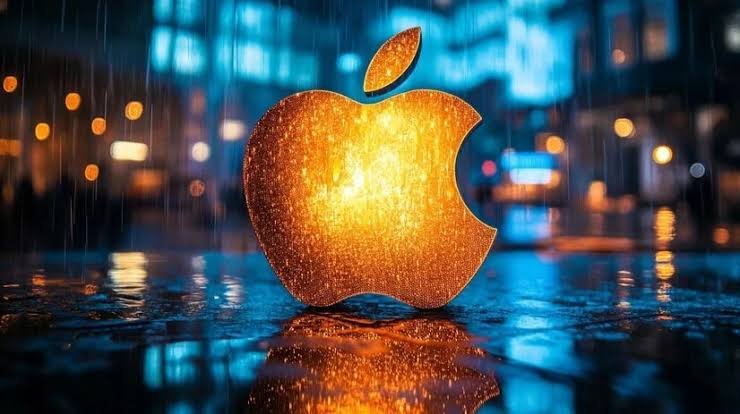
Introduction:
In today’s world, where technology is constantly evolving, the demand for better and brighter screens is growing fast. Enter Metal Oxide TFTs (Thin-Film Transistors) – a technology that’s making waves in the display industry. You might have heard this tech being associated with some popular consumer gadgets, including Apple devices. But what exactly is Metal Oxide TFT technology, and why is it important? This blog will guide you through the basics of metal oxide TFTs, their advantages, and how Apple might be using this technology to deliver stunning displays. By the end, you’ll have a clear understanding of why this tech is a game-changer in the display world.
What Is Metal Oxide TFT?
Metal Oxide TFT stands for Metal Oxide Thin-Film Transistor. It’s a type of semiconductor technology used in displays like LCDs (Liquid Crystal Displays) and OLEDs (Organic Light-Emitting Diodes). Unlike traditional silicon-based TFTs, metal oxide TFTs use metal oxides such as indium, gallium, and zinc. The result is better performance, faster response times, and improved power efficiency.
- How It Works: Metal oxide TFTs function as a switch for each pixel on the screen, controlling how each pixel behaves. The technology allows for quicker and more precise control of pixel brightness, leading to higher image quality.
- Why It’s Better: Compared to traditional TFTs, metal oxide TFTs have higher electron mobility. This means the electrons can move through the material faster, resulting in smoother images and faster refresh rates, perfect for high-definition content.
Apple and Metal Oxide TFTs: A Perfect Match
Apple is known for creating high-quality, visually appealing devices, from iPhones to MacBooks. To keep up with the competition and user expectations, Apple has been exploring advanced display technologies, including metal oxide TFTs. But what makes this technology particularly appealing to Apple?
- High Resolution & Clarity: Metal oxide TFTs help Apple produce displays with incredibly high resolutions. This means sharper images, vibrant colors, and better contrast – crucial for devices like iPhones and iPads, where users expect an immersive visual experience.
- Energy Efficiency: Battery life is a major concern for mobile devices. Metal oxide TFTs use less power compared to traditional silicon-based TFTs, making them an ideal choice for Apple products. This efficiency helps extend battery life while still delivering top-notch display quality.
- Thinner Displays: Because metal oxide TFTs are more efficient, they allow for thinner displays without sacrificing performance. This gives Apple the flexibility to design sleeker and lighter devices, a key selling point for their products.
Benefits of Metal Oxide TFT Technology
This cutting-edge technology has several advantages that make it ideal for the future of electronic displays. Here’s a look at some of the key benefits:
- Faster Refresh Rates: Metal oxide TFTs enable faster refresh rates, which are especially beneficial for gaming, streaming, and other applications where smooth motion is essential.
- Enhanced Brightness: Displays made with metal oxide TFTs can achieve higher brightness levels. This is particularly useful for outdoor usage, where screens need to be visible even in bright sunlight.
- Longevity: The improved stability of metal oxide materials means that displays with this technology have a longer lifespan, making them a durable option for high-end devices.
- Better Image Quality: Since metal oxide TFTs allow for more precise control of pixels, users enjoy richer colors and deeper blacks, enhancing the overall image quality.
Challenges and Considerations
While metal oxide TFT technology offers numerous advantages, it’s not without its challenges. Manufacturers face higher production costs compared to conventional TFTs, which can drive up the price of end products. Additionally, the technology is still being refined to maximize its efficiency and performance.
For Apple, incorporating metal oxide TFTs into their devices means balancing these challenges with the benefits. However, as the technology matures and becomes more widespread, it could become a standard feature in many of their displays.
Future of Metal Oxide TFTs in Apple Devices
Looking forward, it’s likely that Apple will continue to explore metal oxide TFTs for its next-generation devices. As demand for larger screens with better resolutions grows, Apple will need to rely on technologies like metal oxide TFTs to stay ahead of the curve. This could lead to even more energy-efficient products with stunning displays, from iPhones and iPads to MacBooks and even future versions of the Apple Watch.
Conclusion:
Metal oxide TFTs represent a significant step forward in display technology. By offering improved performance, energy efficiency, and visual clarity, they align perfectly with Apple’s commitment to delivering premium user experiences. As this technology continues to evolve, we can expect it to play a central role in shaping the future of Apple devices and many other displays across the tech industry. Whether you’re a tech enthusiast or just curious about the latest trends, understanding metal oxide TFTs helps you appreciate the advanced engineering behind the screens we use every day.
FAQs
- What is a Metal Oxide TFT?
A Metal Oxide TFT is a type of thin-film transistor that uses metal oxide materials instead of traditional silicon. It’s known for providing faster performance and better power efficiency in displays. - Why does Apple use Metal Oxide TFTs in their devices?
Apple uses metal oxide TFTs because they allow for higher resolution, better energy efficiency, and thinner displays, which are crucial for their high-end products. - How do Metal Oxide TFTs improve display quality?
These TFTs have higher electron mobility, allowing for more precise control of pixels. This results in smoother images, faster refresh rates, and richer color accuracy. - Are Metal Oxide TFTs better than traditional silicon TFTs?
Yes, they generally perform better because of their faster response times, lower power consumption, and enhanced image clarity, making them ideal for high-resolution displays. - What materials are used in Metal Oxide TFTs?
Common materials include indium, gallium, and zinc. These metals are combined to create a semiconductor that performs more efficiently than silicon. - Will Metal Oxide TFTs be used in all future Apple products?
While it’s likely that Apple will continue using this technology in some of their premium devices, they may also explore other options like microLEDs or other advanced display tech depending on the application.




